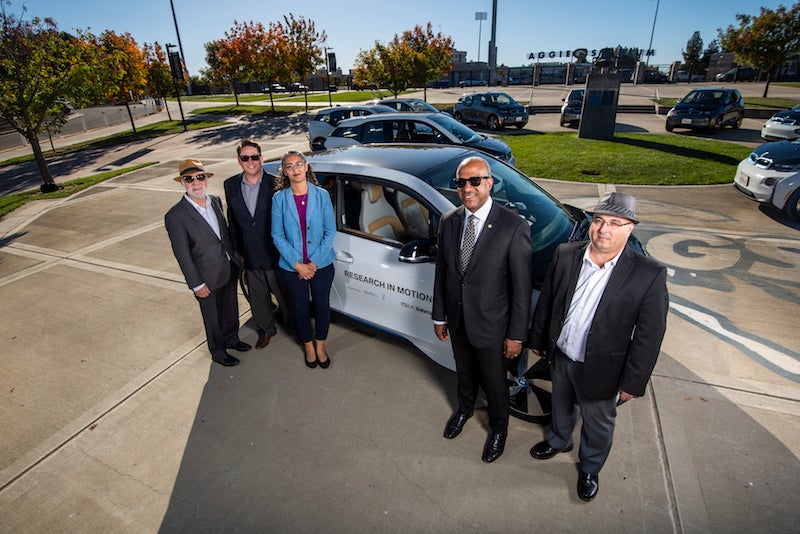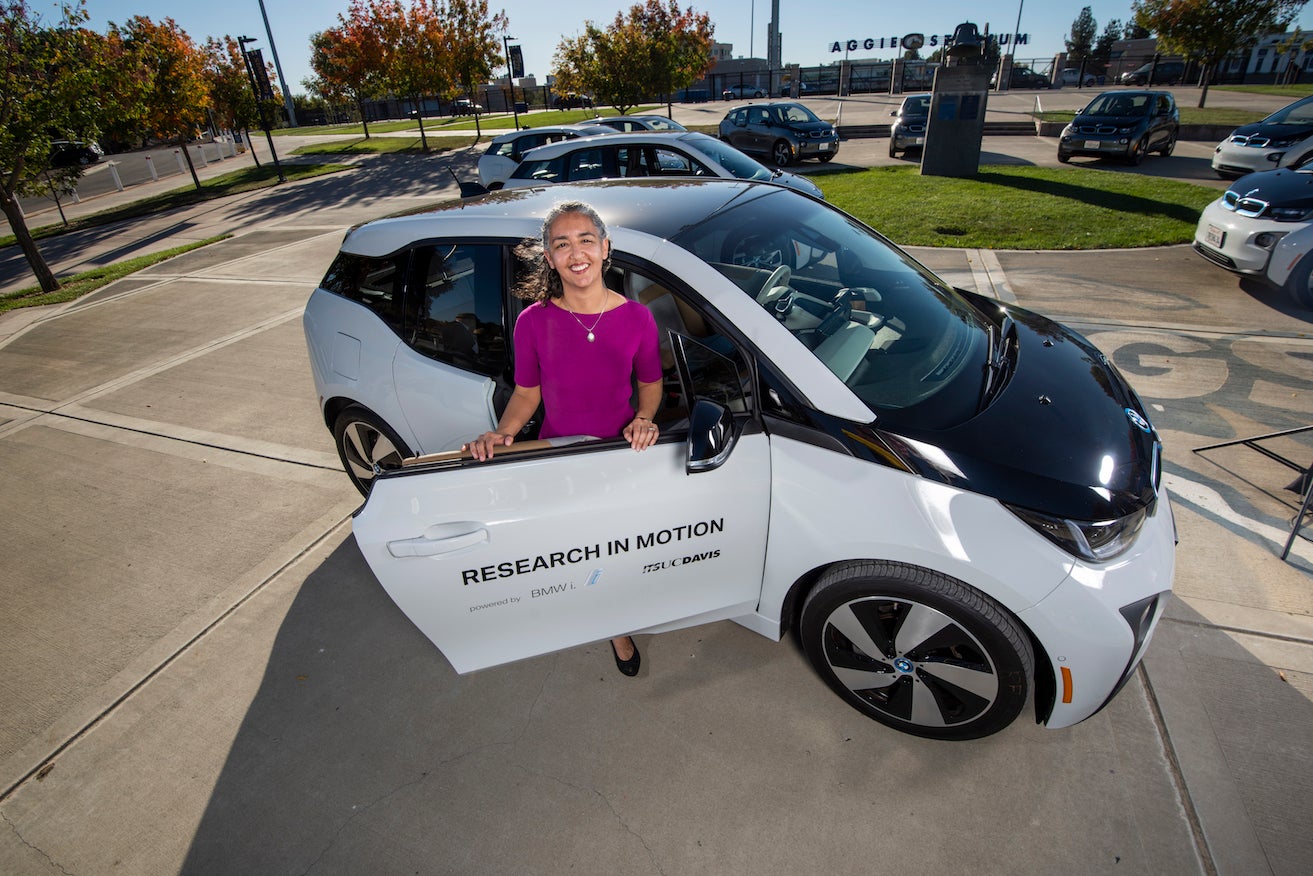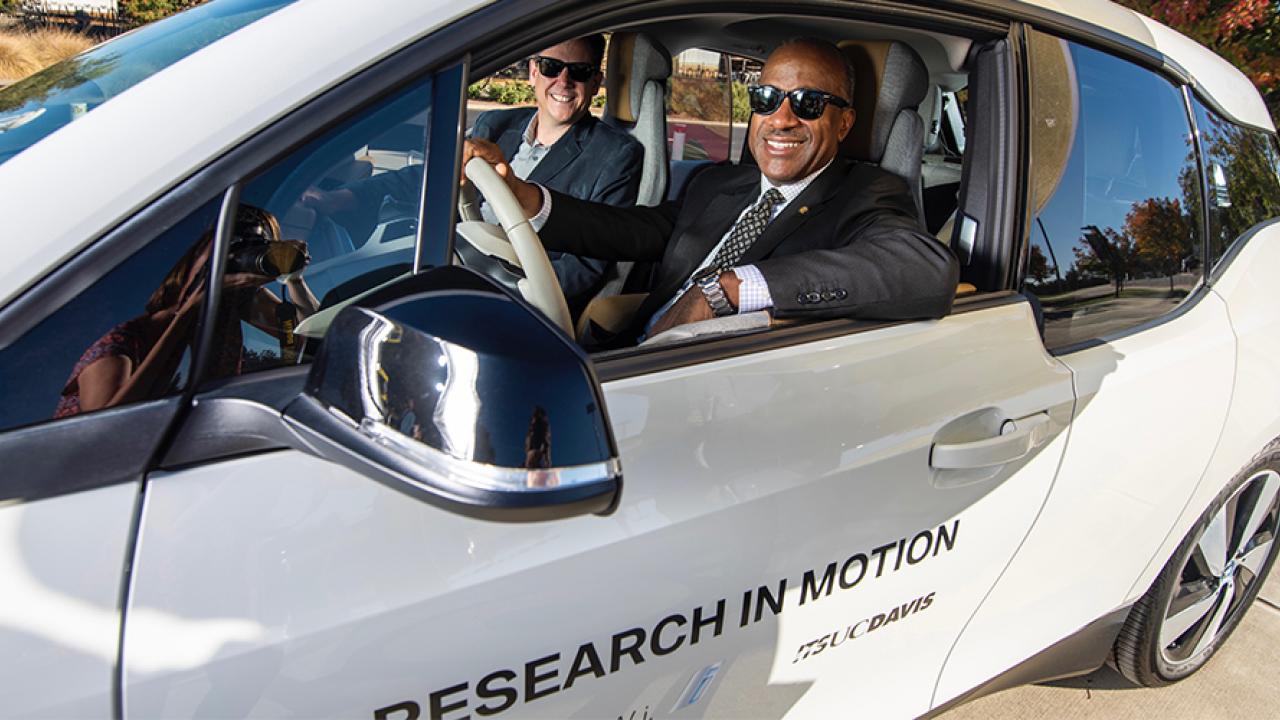Ten electric vehicles from BMW are helping the University of California, Davis, study how to integrate electric vehicles into its fleet.
BMW is providing the Institute of Transportation Studies at UC Davis with the all-electric, BMW i3 models for 18 months. Eight of the pre-owned vehicles will be available soon for UC Davis faculty and staff to rent through the campus’s UC Drive program, which is managed by the Fleet Services department. The other two will be used by project researchers.
“Every one of these will replace a gasoline car in the fleet now,” said Gil Tal, director of the Plug-In Hybrid & Electric Vehicle Research Center at ITS-Davis. “We’re trying to swap out some of those miles for electric miles.”

UC Davis a living lab
Transitioning fleets to electric vehicles helps advance clean energy technologies and reduce emissions from transportation. With UC Davis serving as a living laboratory, the project can help inform other campuses, small cities and towns about what to expect when integrating electric vehicles into fleets. It can also help familiarize potential electric vehicle drivers with the vehicles, with little commitment.
The vehicles are 2015-2016 models, with battery technology that enables an everyday range of about 80-90 miles — ideal for in-town driving, and enough for travel between Davis and Sacramento.
Dahlia Garas, program director of the Plug-In Hybrid & Electric Vehicle Research Center, said the project has four main components. “We’re trying to help the campus electrify,” she said. “We also want to learn how fleets can incorporate used electric vehicles, which are available at a lower price than newer generations. We are learning more about how to integrate electric vehicles with the grid.”

The final component is understanding users and their experience with the vehicles. Center researchers will be conducting education and outreach with campus departments and UC Drive participants to teach them how the cars work. They will also conduct surveys to determine how people’s opinions change about electric vehicles before and after driving one.
The road to sustainability
“We’re moving toward a transportation system of reduced personal car ownership,” said ITS-Davis Director Dan Sperling, whose book Three Revolutions describes a three-pronged approach to sustainable transportation that involves integrating electrification, ride-sharing and autonomous vehicles. “This is one slice of conditioning the market, users and institutions like this university to think along those lines.”
As that transportation shift progresses, motor companies are interested in opening up secondary markets for their vehicles.
“We are pleased to be working together with UC Davis in this multifaceted research initiative,” said Simon Euringer, vice president of the BMW Group Technology Office USA. “This collaboration will enable new study of electric vehicle use and charging patterns, generating new insights that will help further our shared aim of making connected electric vehicles more accessible.”
The research also ties into UC’s Carbon Neutrality Initiative, which commits UC to emitting net zero greenhouse gases from its buildings and vehicle fleet by 2025.
“I look forward to driving one of these vehicles myself, joining my UC Davis colleagues in getting behind the wheel for a healthier planet,” said UC Davis Chancellor Gary S. May.
Media Resources
Kat Kerlin, News and Media Relations, 530-750-9195, kekerlin@ucdavis.edu
Stephen Kulieke, Institute of Transportation Studies at UC Davis, 530-752-2039, skulieke@ucdavis.edu
